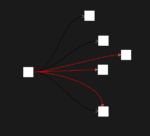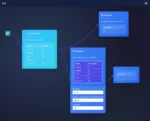
by tyler garrett | Jun 7, 2025 | Data Processing
In today’s data-driven landscape, organizations rely on structured data files such as CSVs (Comma Separated Values) to unlock crucial insights and foster strategic decisions. Despite their simplicity and widespread use, CSV files frequently present challenges such as malformed headers, data inconsistencies, and tricky encoding issues. For business leaders and technical strategists aiming to maintain a robust analytics environment, successfully handling dirty CSVs is not just a technical problem—it’s a foundational prerequisite for trustworthy analysis. In this comprehensive guide, we’ll explore common hurdles associated with processing poorly formed CSV files and their problematic encoding. We’ll also share proven methodologies and industry standards that our advanced analytics consulting services team leverages to turn these obstacles into actionable insights. By mastering the clean-up of CSV data, your organization can ensure stronger decision-making powered by accurate, reliable, and timely data.
When CSV Files Turn Troublesome: Identifying Malformed Headers
CSV headers act as critical metadata, providing essential context that analytics platforms rely on to structure information accurately. Unfortunately, due to varying sources and inconsistent implementation of data-reporting standards across an enterprise or external vendors, malformed headers frequently emerge as an initial obstacle. Issues such as missing header rows, duplicates, inconsistent naming conventions, or unwanted special characters severely compromise data integrity and complicate analysis.
For instance, when headers contain special characters or whitespaces like “Customer ID#” or “Revenue ($),” many data platforms and analytical tools face difficulties. Similarly, CSV header misalignments often originate in manual data entry, legacy systems, or during automation malfunctions, damaging the reliability and repeatability of insights derived from datasets. To quickly identify and manage malformed headers, organizations can leverage automated header-checking validation embedded within their data pipelines, accompanied by effective error detection methods such as schema validation (learn more in our discussion about schema registry integration for pipeline data validation).
Intelligent header validation tools can swiftly analyze incoming CSV files and automatically flag issues using flexible schema definitions. Encouraging your data analysts and engineers to follow metadata exchange standards like DCAT fosters systematic consistency and ensures alignment of CSV headers with strategic data governance frameworks. Embedding such proactive approaches into enterprise data management ultimately reduces time-consuming data cleaning activities, ensuring analysts spend more resources generating value-add analytics.
Navigating Encoding Challenges: Key Considerations for CSVs
Encoding issues represent another significant hurdle when organizations deal with CSV files generated by diverse systems and global partners. Although UTF-8 is increasingly adopted as an industry-best practice for cross-platform compatibility, legacy applications and mismatched regional encodings regularly produce CSV complications. Typically, misencoded CSVs exhibit unintelligible text, unexpected character substitutions, or frustrating import failures, making it tough for analytics teams and systems to extract meaningful insights.
For instance, encountering CSV data from international partners can yield encoding issues, particularly when ANSI-encoded special characters or UTF-16 encodings creep unintentionally into expected UTF-8 environments. Such encoding anomalies often manifest in corrupted numerical formatting, garbled text values, or premature truncation of imported cell content, negatively impacting downstream analytic insights.
To effectively navigate encoding conflicts, it’s crucial that your teams fully validate CSVs upon entry into the analytical environment. With tailored encoding detection and cleansing techniques embedded directly into your ingestion pipelines, accuracy and data reliability substantially improve. For complicated, long-run batch processing scenarios, it’s crucial to utilize strategies such as checkpoint-based recovery methods, helping confidently recover or retry file parses without significant impact if interruptions occur due to encoding challenges. By taking proactive encoding validation measures, businesses significantly reduce risk and empower their analytic capabilities with cleaner, more reliable datasets.
Implementing Robust Approaches: Tools and Strategies for CSV Cleansing
When tackling complex CSV file cleanup, organizations must adopt appropriate technology and structured procedures. Robust CSV-wrangling tools like Python libraries Pandas, csvkit, or data-quality platforms integrated into your ETL workflows can rapidly identify and remediate numerous typical data quality issues. Through comprehensive software libraries and advanced analytics platforms, teams efficiently pinpoint inconsistencies, malformed columns, or problematic character encoding discrepancies, dramatically reducing manual review.
When deploying these tools, organizations must first define clear standards and expectations related to CSV ingestion. Establishing standardized expectations around file templates, column naming conventions, data dictionary definitions, and acceptable encoding standards will streamline the ingestion process for analysts, engineers, and business stakeholders. Integration of automated reformatting scripts and preprocessing workflows into your backend systems transforms CSV cleansing from a cumbersome manual task into a strictly defined and repeatable data pipeline.
With robust pipeline strategies, organizations become considerably more agile. Cleansing CSV data in real-time unlocks rapid, strategic opportunity, as demonstrated through our exploration into using data analytics for transportation improvement efforts in Austin, Texas. Effective cleansing routines empower near real-time analytics and decision-making processes that create tangible community impact. By combining high-quality CSV data with powerful analytic visualization techniques like ridgeline plots, stakeholders can swiftly interpret rich data insights to guide corporate strategies and public policies confidently.
Enhancing CSV Data Integration: Governance, Standards, and Continuous Improvement
A long-term strategy addressing dirty CSV files requires ongoing process refinements, robust governance structures, and well-defined data standards. Continually revisiting your CSV file-handling strategy will help prevent recurring issues by enabling your organization to recognize symptomatic and systemic data challenges proactively. Through data governance committees or analytics leadership councils, these structured approaches enforce CSV file validation, cleansing, and standardized metadata management frameworks.
Aligning data management operations through formalized processes such as Metadata Exchange Standards (MES), including DCAT, ensures your organization consistently retains high-quality data within your broader analytical strategy. By incorporating formalized standards within pipeline orchestration, automating ISO metadata compliance verification, and periodically auditing ingestion practices, organizations significantly improve data reliability and reduce analytic uncertainty.
Additionally, embedding an analytics design culture built upon principles such as Gestalt dashboard design methodologies can help clarify data presentation. A cleaner underlying dataset yields improved clarity in reporting and analytics visualization. Ultimately, strong governance, continuous improvement, and thoughtful analytic visualization align together under strategic frameworks that prioritize trustworthy data, effective analytics, and informed decision-making enterprise-wide.
Real-time Opportunities: How Clean CSV Processing Supports Fraud Detection and Prevention
In our interconnected and automated marketplace, clean real-time data ingestion directly supports mission-critical use cases such as fraud detection and risk mitigation. Organizations are increasingly generating huge amounts of CSV-format transactional and telemetry data, containing rich forensic insights. However, delays or inaccuracies caused by poor-quality CSVs negatively impact fraud prevention systems, resulting in reactive rather than proactive responses.
Leveraging strategic data cleansing and CSV-data cleaning techniques significantly boosts data streaming quality. Integrating meticulously-cleaned CSV files into real-time systems improves analytic algorithms’ accuracy, thereby stopping fraud before it occurs—crucial for operating efficient businesses. This capability is extensively explored by our analytics consulting practice, emphasizing the role of data streaming methods in fraud prevention. Accurate CSV integration powers predictive analytics models geared toward consumer confidence, secure transactions, and stringent compliance management.
By proactively ensuring high-quality CSV inputs, advanced predictive models detect anomalies earlier, enabling immediate interventions. Through vigilant governance, standardized ingesting practices, and robust validation processes, organizations empower analytic systems to deliver substantial competitive advantages—guaranteeing timely execution, reducing revenue loss, and fostering stronger customer trust.
Conclusion: Turning Dirty CSV Data into Competitive Advantage
Effectively addressing CSV-related challenges is more than a technical solution—it represents a crucial strategic differentiator to maintain market leadership through actionable insight. As organizations rely increasingly on data-powered decision-making, proactively evaluating, cleansing, and standardizing CSV datasets assures resilience and long-term analytic advantage. Ensuring effective oversight and strategic adoption of innovative CSV processing techniques transforms previously troublesome problems into valuable competencies that drive performance, revenue, and sustainable growth.

by tyler garrett | Jun 7, 2025 | Data Processing
In our increasingly data-driven economy, information is a strategic asset that fuels innovation, propels business intelligence, and empowers strategic decision-making. Yet lurking within every organization’s database is a dormant peril: “zombie data.” These are outdated, erroneous, or irrelevant pieces of data that no longer add value, yet persistently clutter storage and misdirect decision-making efforts. Like zombies in pop culture, obsolete data plagues our systems—consuming resources, misleading insights, and ultimately diminishing the impact of even the most sophisticated data strategies. Today, we guide decision-makers through identifying zombie data, understanding its hidden costs, and strategically purging it to maximize organizational health and competitive advantage.
Understanding Zombie Data: A Hidden Threat
“Zombie data” represents stale relics hiding in your organization’s data warehouse, feeding off resources without contributing meaningful insights. Such obsolete information manifests in various forms: duplicated entries, outdated customer records, redundant transaction histories, deprecated analytics dashboards, and datasets gathered under legacy systems that are no longer in active use. As your enterprise strives toward technological innovation, these obsolete elements subtly degrade operational efficiency and quality of data-driven decisions.
Organizations often overlook this issue, treating redundant or outdated data as simply a byproduct of operations. However, obsolete data is not innocuous; it poses substantial threats to an organization’s agility, scalability, and accuracy in analytics operations. Zombie data diminishes trust in data quality, introducing inconsistencies and misleading insights during critical analysis processes. For example, incorrectly analyzing transportation trends due to zombie data could drastically impact strategic initiatives grounded in timely, precise analytics. Utilizing modern methodologies like intelligent data routing based on content analysis is hindered by inaccurate, outdated data, undermining automated efficiencies and smart decision-making capabilities.
In a world increasingly reliant on insights from advanced methodologies, zombie data compromises results-driven analytics practices such as analyzing data on the use of transportation services. Ensuring metadata accuracy and data relevancy becomes not a choice, but an imperative.
Identifying Zombie Data: Recognizing Symptoms of Obsolescence
Before purging obsolete data, organizations must methodically identify where zombie artifacts reside. Accurate diagnosis begins with recognizing symptoms and implementing structured processes to detect obsolete datasets. Symptoms generally present as dated documentation, irrelevant analytics reports, duplicated records, and dysfunctional or broken queries returning distorted data that conflicts with live information.
Spatio-temporal data, for instance, is particularly susceptible to obsolescence issues. Organizations leveraging geospatial analytics using solutions like spatio-temporal indexing structures for location intelligence may experience severe implications when stale records distort visualized trends. Additionally, user-generated or continuously-generated data often exacerbates zombie data vulnerabilities if governance frameworks are inadequately implemented to manage freshness, timeliness, and lifecycle stages within data warehouses.
Effective prevention and elimination start with building strategic diagnostic tools and routines, like automated audits, metadata indexing, and data lifecycle assessments. For instance, leveraging a robust and centralized data element cross-reference registry implementation significantly assists in highlighting duplicated records, redundant queries, and orphaned datasets. Early identification empowers informed decision-making processes, enabling organizations to swiftly remediate and prevent further data contamination.
The Business Implication: Zombie Data’s Real Cost
Zombie data is not merely problematic for operational integrity—it has tangible costs that degrade business value and competitive potential. It contributes heavily to wasted storage resources, inflated cloud expenditures, and elevated infrastructure procurement costs that directly impact bottom-line profitability. Organizations unnecessarily exert resources managing redundant or expired datasets, inflating operational costs without realizing any incremental benefit or gain.
Beyond storage and resource utilization, zombie data negatively influences analytical reliability and efficiency. Incorrect, obsolete data contaminates downstream analytics efforts, ultimately propagating misleading insights throughout the organization. Decision-makers relying upon compromised datasets may inadvertently execute strategic plans built upon invalid or outdated narratives, potentially harming organizational positioning and profitability.
Additionally, obsolete data usage severely impedes initiatives related to visualization practices, particularly those based on modern toolkits like visualization grammar implementation with Vega-Lite. Misinformed visualizations derived from “zombie” sources can mislead stakeholders and structurally weaken informed decision-making capabilities. Consequently, insights generated from compromised data limit clarity, agility, and organizational responsiveness, resulting in slow adaptability amidst evolving market conditions.
Purging the Undead: Strategies to Remove Zombie Data Effectively
Upon identification, strategic data deletion must follow precise best practices ensuring the continued integrity and usability of remaining data assets. Purging obsolete data effectively depends significantly upon rigorous governance protocols, thoughtfully developed lifecycle management programs, and alignment with strategically defined retention policies. Establish clear guidelines specifying dataset expiration parameters, update cycles, and renewal approaches.
Implement intelligent deletion processes that leverage methodical pipeline templates, such as parameterized pipeline templates for reusable data processing, to systematically evaluate lifecycle stages, redundancy, and obsolescence. Employing automation to manage lifecycle analysis, validation thresholds, and expiry date management ensures executives retain reliable infrastructure, consistently optimize resources, and improve efficiencies.
Ensure transactional integrity when purging obsolete data utilizing tested and proven transactional data loading patterns for consistent target states, guarding against partial deletions or broken relational dependencies within intertwined datasets. Together, these solutions forge a holistic strategy ensuring safe, effective, and systematic purging resulting in improved resource allocation, analytical agility, and operational productivity.
Preventing Future Outbreaks: Best Practices in Data Governance and Architecture
Preventative measures serve as crucial safeguards for protecting your organization’s analytics maturity and adhering to strategic data governance initiatives. Adopting comprehensive data warehousing frameworks and governance processes positions organizations to consistently eliminate zombie data proactively. Engaging trusted experts—like those who provide dedicated data warehousing consulting services in Austin, Texas—allows organizations to build sophisticated yet accessible data models, policies, and preventative structures.
Investing in modern technical infrastructures and launching ongoing data quality training programs significantly empowers organizational capacity to maintain actively useful and accurate datasets. Solutions around ensuring accessible data by designing accessible visualizations for screen readers not only comply ethically with accessibility principles but also boost data accuracy and resilience, fostering trust in an organization’s data accuracy across diverse user groups and stakeholders.
Finally, ensure administrators contain robust operational controls. Techniques such as setting strict guidelines, actively monitoring usage scenarios, immediately repairing broken dependencies, and regularly performing advanced data cleansing routines prevent the unintended proliferation of obsolete and inaccurate data. Establish clear operational protocols such as periodic pruning, cross-referenced dataset validations, version-controlling reports, and training teams to identify redundant data and metadata effectively.
The Path Forward: Data Hygiene as Innovation Catalyst
Treating zombie data seriously allows organizations not only to safeguard operational efficiency but positions data hygiene as an integral innovation catalyst. Organizations that prioritize proactive strategies to regularly identify, purge, and prevent obsolete data ensure that their analytical foundation remains robust, agile, and innovative—anchored confidently in trusted data that reflects reality, rather than historic irrelevancy.
To build resilience against potential growth in obsolete datasets, organizations must engrain proactive data governance and lifecycle management practices as foundational strategic investments. Clean, trusted data fosters clarity in planning and accelerates efficient decision-making processes, enhancing organizational agility and responsiveness. Ultimately, effective zombie data management equates directly to heightened trust, efficiency, and innovative potential, positioning your organization solidly for future success and competitive agility.
Whether you manage data infrastructures daily or seek strategic expertise in analytics and warehouse modernization, embracing robust data hygiene protocols ensures your strategic investments in technology continually drive meaningful value, avoid pitfalls like obsolete datasets, and keep your organization viable and prepared for sustained digital transformation success—without ever needing to start Windows 10 in advanced boot options during a data management crisis.
Tags: Data Governance, Zombie Data, Data Warehousing, Data Lifecycle Management, Data Quality, Strategic Analytics

by tyler garrett | Jun 7, 2025 | Data Processing
In a bustling digital economy, data fuels business innovation, decision-making, and competitive advantage. Yet amidst the vast streams of data collected daily, duplicate records silently inflate quality risks, distort analytics, and escalate operational inefficiencies. To maintain robust data health and reliable insights, organizations require scalable solutions to accurately identify and address duplicates. Enter data fingerprinting—the sophisticated yet practical methodology for efficiently detecting duplicate records at massive scales. In this blog, we explore the art of data fingerprinting, highlighting strategic approaches, cutting-edge techniques, and real-world applications that help organizations ensure data quality, accuracy, and clarity in decision-making processes.
Understanding the Essential Role of Data Fingerprinting
Data fingerprinting is an innovative methodology used to uniquely identify and verify data objects by generating concise, representative signatures—often known as “fingerprints.” Each fingerprint, typically produced through hashing algorithms or leveraging specific sets of features from the data, acts as a unique identifier. Businesses employ fingerprints for rapid recognition of duplicates and effective data validation, fundamentally improving the integrity of analysis and the accuracy of business intelligence.
Detecting duplicate records through fingerprinting becomes indispensable as data systems grow increasingly complex, distributed, and heterogeneous. Without reliable deduplication approaches in place, insights drawn from data analytics are susceptible to inaccuracies, potentially leading to misguided decisions. Techniques like data fingerprinting provide streamlined and automated ways to consistently maintain data authenticity—facilitating a strong foundation for precision-driven analytics.
At its core, data fingerprinting complements other essential strategies like multi-stage data validation by augmenting rules-based checks with a more granular verification layer. By efficiently identifying duplicate entries at scale, companies reap increased trustworthiness in analytical dashboards, improved user experiences, and significantly reduced manual verification overheads.
The Mechanics Behind Data Fingerprinting
Hashing-Based Fingerprinting Methods
A fundamental method for data fingerprinting is using cryptographic hash functions such as MD5, SHA-256, and MurmurHash. These functions take inputs of varying lengths, including long strings or file binaries, and output fixed length, unique-looking representations. Due to their efficiency in computation, hashing methods become ideal for detecting duplicate records across massive data sets and diverse data sources. Hash algorithms ensure identical strings produce identical fingerprints, reigning in the identification power necessary to manage data integrity.
Choosing a hashing method requires understanding your data volume, performance trade-offs, and collision rates. Although uncommon, collisions—instances where two distinct records generate the same fingerprint—can occur even with robust hashing algorithms. Selecting appropriate hashing techniques mitigates risks of collision errors and ensures fingerprinting accuracy and consistency.
Feature-Based Fingerprinting Approaches
For some data types, especially textual content, hashing alone might be insufficient. Feature-based methods combine multiple attributes or data fields into composite identifiers or semantic signatures. Utilizing tokenization and processing algorithms for content comparison, these methods enrich fingerprint diversity and match accuracy. Leveraging advanced semantic analysis and comparison methodologies—discussed in our recent article on semantic layer optimization—enables users to validate similarity at granular levels, augmenting the effectiveness of duplicate detection.
When employed smartly and consistently, these two fingerprinting techniques collectively deliver robust solutions that identify records with enhanced granularity, accuracy, and speed, making them indispensable for large-scale data environments.
Scaling Data Fingerprinting: Solving Big Data Challenges
As businesses increasingly embrace Big Data solutions, fingerprinting techniques must scale efficiently to handle billions of data points, real-time data streams, and distributed computing environments. Modern data fingerprinting solutions harness scalable analytics platforms, distributed database architectures, and sophisticated data processing frameworks that integrate seamlessly with existing infrastructure.
Organizations looking to scale effectively might consider leveraging process automation and platform orchestration tools—such as Airflow, Prefect, or Dagster—to coordinate the execution of fingerprinting tasks at scale. We provided deep insights into each tool’s strengths and trade-offs in our comparative analysis of pipeline orchestration strategies. With these tools, fingerprinting tasks become streamlined, repeatable, and automatically maintain data accurately and efficiently.
Real-time fingerprinting, particularly critical in applications requiring immediate data verification, often leverages advanced dynamic window computation models. Implementing these approaches supports businesses in continuously monitoring duplicate data entries as they stream into data systems, offering near-instantaneous insights into data health and accuracy. Successful large-scale fingerprinting implementations hinge upon choosing scalable algorithms and architectures that align closely with an organization’s existing technologies and future growth strategies.
Utilizing Fingerprinting for Advanced Data Validation and Metric Accuracy
Incorporating fingerprinting seamlessly complements and enhances other validation strategies, like metric drift detection, delivering multifaceted data quality assurance mechanisms. For complex enterprises, a structured data governance model, as explored in our methodologies about how to establish an enterprise canonical data model, becomes foundational. Fingerprints can seamlessly integrate into such structured data models, validating and facilitating accurate communication of common data in distributed systems.
Moreover, data fingerprinting supports sophisticated interactive approaches like crossfiltering techniques used in multi-chart dashboards. Ensuring data uniqueness and cleanliness through early-stage fingerprinting translates into clearer, intuitive dashboards—driving optimized user experiences and sound analytical interpretations. Ultimately, by embedding fingerprinting strategically into data systems, organizations promote reliable insights and effective decision-making across all business domains.
Overcoming Common Challenges in Fingerprinting Implementation
Data fingerprinting implementation presents several noteworthy challenges that must be navigated strategically. Addressing operational overheads, accommodating evolving data structures, and managing computational costs demand careful management. Successful practitioners emphasize deploying precise fingerprinting techniques aligned directly to their unique business environments, focusing clearly on data characteristic identification and aligned performance objectives.
One recognized concern is managing computational resources efficiently, especially when handling large data volumes. Companies should perform systematic comparative analysis of ETL solutions to understand performance impact and budget optimization. Similarly salient: avoiding ‘analysis paralysis’ and ‘chart junk’ by ensuring data quality through fingerprinting procedures—a concept we’ve thoroughly outlined in our previous assessment of chart junk removal. Removing data redundancies and inaccuracies further refines analytics and interpretation capabilities, aligning data-driven outcomes to strategic business priorities.
Effective fingerprinting demands continuous reflection, data validation evaluations, and adjustment processes. Partnering with experienced consultants, such as Dev3lop’s data visualization consulting team, supports organizations by providing strategic advice and technical expertise needed to overcome digital fingerprinting barriers quickly and effectively.
Aligning Fingerprinting Strategy with Emerging Technologies
As artificial intelligence and machine learning technologies mature at exponential speeds, fingerprinting techniques broaden, evolve, and adopt forward-thinking innovations. As covered in our recent case studies and overview of real-world AI business applications, machine learning-driven fingerprinting separates subtle duplicates that simple hashing algorithms may overlook.
In rapidly changing environments where traditional fingerprinting methods face limitations, organizations can benefit from employing intelligent systems that continually adapt fingerprints through pattern recognition, robust analytics, and semantic technologies. Investing into such advancements provides increased accuracy, enriched data understanding, and amplified competitive advantage derived from higher-quality analytical conclusions and more effective business strategies.
Ultimately, effective data fingerprinting positions the modern organization as not merely reactive but strategically proactive and resilient—prepared through innovation to thrive in competitive, data-driven landscapes.

by tyler garrett | Jun 6, 2025 | Data Processing
In the age of big data, efficiently handling large datasets has become essential for organizations looking to maximize their technology investments. The methods employed for data access and storage significantly shape the performance of modern analytical workloads. Among these techniques, memory-mapped files and traditional input/output (I/O) offer distinct performance and usage characteristics. As decision-makers and technical strategists focusing on innovation, data scalability, and optimized solutions, understanding clear performance comparisons between these approaches can yield significant efficiency and scalability benefits. In this blog, we’ll provide a detailed performance benchmark and analysis to guide you in choosing the most efficient data handling strategy for large datasets within your technology environment.
Understanding Memory-Mapped Files and Traditional I/O Approaches
Memory-mapped files (MMFs) represent a strategic data access model where parts or the entirety of a file is mapped into memory spaces. This approach enables seamless data manipulation through direct memory interactions. As a result, the I/O overhead of system calls and data copying operations can be significantly reduced when compared with traditional file I/O methodologies. Memory mapping is leveraged extensively in robust analytical data pipelines to accelerate access and real-time analytics.
Conversely, traditional file I/O involves explicit system-level read and write operations or buffered streams orchestrated directly through the operating system’s calls. While this approach offers simplicity and is universally understood by developers, it may introduce higher latency due to increased overhead from context switching and explicit buffering mechanisms.
As you integrate complex architecture like external reference data integration, consider carefully how the underlying data handling approach affects performance scalability. Understanding these methodologies’ strengths and drawbacks can significantly influence your company’s analytical capabilities, particularly when managing intensive workloads at scale.
Benchmarking Large Dataset Use Cases: Performance Metrics and Methodologies
Benchmarking memory-mapped files against traditional I/O requires carefully constructing repeatable and realistic scenarios. Benchmark accuracy depends on several critical metrics, including latency, throughput, memory consumption, scalability under load, and CPU utilization. For test purposes, datasets exceeding several gigabytes ensure valid results reflective of real-world big data scenarios. Common industry benchmark methodologies include sequential read, sequential write, random read/write, and mixed workloads.
When strategizing analytical pipelines—whether handling polymorphic schema handling in data lake environments or developing systems reliant on quicker cross-system identification via legal entity identifier integration—it’s beneficial to conduct thorough testing against both approach benchmarks. Such comprehensive analysis helps pinpoint bottlenecks early, enabling intelligent prioritization of optimization efforts as your datasets scale.
A structured benchmark scenario might comprise a process involving multi-terabyte file reads, frequent updates to dynamic files, parallel access patterns for analytical queries, or synthetic workloads that simulate common pipeline stages. Industry-standard benchmarking frameworks or specialized custom tests tailored to your specific pipeline workflows offer valuable insights into selecting appropriate methods.
Performance Results and Comparative Analysis
When benchmarking large datasets indicative of real-world database pipelines and sophisticated analytics workloads, memory-mapped files tend to demonstrate considerably greater performance in scenarios involving random access, frequent updates, and concurrent reads. This performance boost largely stems from directly leveraging the operating system’s virtual memory manager, minimizing overhead, reducing memory copy operations, and speeding up data access significantly.
However, traditional I/O can occasionally offer more predictable performance in strictly sequential read/write scenarios, particularly when datasets exceed the system’s dedicated RAM capacity significantly. Due to sequential accesses being highly optimized at the operating system level—particularly when leveraging buffered I/O—the overhead can sometimes be minimal or offset in cases where sequential streaming is prevalent.
Taking the time to understand and interpret these benchmarks closely aligns decision-makers with smarter strategic investments, most notably when complementing advanced data methodologies like columnar vs document-based storage. Detailed comparative analysis empowers teams to maximize all layers of your data infrastructure—from integration workflows to visualization layers and more specialized components like pipeline execution planning and drift detection processes, as discussed in our article on pipeline drift detection and monitoring.
Memory Usage and Resource Efficiency Considerations
An intentional assessment of memory usage is essential, particularly with memory-mapped files. Although memory mapping is optimized, directly mapping large dataset files into memory can introduce resource management challenges. Depending on operating system configurations and hardware resources, excessive paging or swapping can potentially harm overall system responsiveness for other critical processes sharing the environment.
On the other hand, traditional I/O generally provides better control over resource usage and allows developers and infrastructure managers to explicitly optimize memory buffers to ensure predictable memory and resource consumption behaviors. This reduces the possibility of unintended impacts on other crucial pipeline processes
When your data strategy incorporates more sophisticated integrations, like leveraging external reference data architectures, understanding resource budgeting becomes critical. Strategic use of each technique must weigh resource scalability against raw performance considerations, ensuring sustainable and responsive data architectures aligning smoothly with your broader technology vision.
Scalability Under High-Throughput Workloads
Another consideration critical to acting upon benchmark information effectively is scalability. Under high-concurrency workloads, traditional I/O models involving explicit buffering often encounter bottlenecks due to OS-level locking mechanisms, file handles, and I/O queuing overhead. Frequent context switches and buffer management can degrade performance drastically when dealing with extensive pipelines and diverse workload patterns, common within modern, cloud-based analytics environments.
Memory-mapped files frequently excel here. They facilitate shared memory usage across multiple independent processes to enable substantial parallelism and rich concurrency. MMFs not only eliminate the overhead of continuous system call invocations but also significantly lower stack and context switching demands, enabling more efficient resource management in highly complex analytical systems.
Complex data interactions in modern workflows—such as those integrating real-time data or multi-layered pipeline execution planning approaches—generally benefit from adopting memory-mapped file architectures. Enterprises tasked with maintaining seamless, high-scale architecture patterns benefit immensely when embracing innovation and scalability offered through sophisticated MMF usage patterns.
Strategic Recommendations: Choosing the Right Solution
To select the ideal strategy, consider the typical workload characteristics prevalent in your data environment:
When to choose Memory-Mapped Files:
- Random or complex access patterns prevalent in analytics processing and real-time systems uncertainty
- Concurrent dataset reads and writes with multiple processes or parallel read-intensive workflows
- Need for significantly lower latency and quicker response time in data access scenarios
When to choose Traditional I/O:
- Primarily sequential-access workloads or predictable stream like operations
- Greater resource predictability and transparency in regards to memory management
- File-based workflows heavily optimized around explicit read/write logic
Carefully align your data-handling methodologies with unique workloads within your organization’s architecture. Consult experts through platforms such as our tailored Procore API consulting services, and utilize meaningful strategic discussions and robust data analytics capabilities to fully leverage your technology investments.
Integrating intelligent benchmarking, strategic understanding, and future-oriented innovation ensures your data strategies truly align with your long-term technology vision.
Conclusion: Harnessing the Right I/O Methodology for Business Success
Memory-mapped files and traditional I/O each have unique advantages and constraints. Proper benchmarking can equip your teams with concrete data to make informed decisions, significantly enhancing efficiency in analytics solutions, system performance, scalability, and overall cost effectiveness in the long-term.
Empowering your leadership and development teams with insightful benchmarking and performance analytics results in smarter strategic decisions, more efficient operations, and ultimately, innovation that drives competitive business superiority. Always consider each scenario individually to discover and deploy technology strategies that align best with your tailored architecture requirements.

by tyler garrett | Jun 6, 2025 | Data Processing
In today’s data-intensive world, dealing with nested JSON structures is like navigating the Wild West of data management: vast opportunities, but equally significant challenges. Decision-makers and data strategists know the headache of unraveling deeply nested JSON structures that obscure valuable insights. Successfully flattening this complexity isn’t just a technical task—it’s a strategic advantage giving enterprises clearer, faster access to valuable analytics and insights. At Dev3lop, as experts dedicated to navigating the complexities of data warehousing and analytics, we’re here to simplify your journey and illuminate solutions. Join us as we demystify advanced flattening techniques, empowering your analytics teams and putting you ahead of competitors in leveraging complex JSON data structures.
Understanding the Complexity: Why Nested JSON is Challenging
The explosion of JSON as a ubiquitous data format across web APIs, databases, and IoT applications has drastically increased datasets’ complexity. While the hierarchical structure of nested JSON serves well to encode relationships and preserve meaningful representation, it also makes traditional relational databases and analytical tools strain under unusual complexity. Analysts and decision-makers can quickly become overwhelmed when trying to obtain actionable insights from this tangled format, especially when dealing with deeply nested arrays and objects within objects.
The main issue revolves around simplicity versus complexity. While JSON’s flexibility allows expressing intricate hierarchical data, analytical workflows benefit from a flattened, relational data format. Each level of nesting complicates queries and negatively impacts readability, maintenance, and processing speed. It becomes inefficient and error-prone to write SQL-like queries against deeply nested structures, even with contemporary NoSQL database systems. Additionally, nested JSON raises challenges around schema standardization, compatibility with visualization tools, and often introduces complications in data ingestion pipelines.
The complexity also exposes organizations to vulnerabilities hidden deep within data structures. Unmanaged complexity not only inhibits analytics and clarity but can expose sensitive information embedded in overly complex structures. Data privacy and security concerns, such as the dangers described in inference attack prevention in published datasets, underscore the importance of your team thoroughly understanding and controlling nested JSON structures.
Essential Strategies for Successful JSON Flattening
Establish Clear Flattening Methodologies
A fundamental strategic approach involves clearly defining standard flattening methodologies specific to your organizational needs and use cases. Typically, flattening involves converting deeply nested JSON into a single-level format or multiple relational tables with direct, linear relationships. Begin defining clear guidelines around depth levels, column and table naming conventions, and structuring related data sequences logically. Standardized techniques streamline collaboration among engineering, data analytics, and visualization teams, significantly reducing confusion and delays.
Structured flattening methods align neatly with relational databases and analytic workflows, simplifying integration tasks and fostering rapid data processing capabilities in analytics tools. Effective flattening is a crucial precursor to implementing advanced visualization techniques that rely upon intuitive data structures for meaningful insights, such as those outlined in data visualization best practices. Without successful flattening, even the most robust visual dashboards become cumbersome and challenging to maintain.
Leverage Modern Data Warehousing Practices
Rather than contending with JSON flattening entirely within custom-coded scripts or bespoke one-off solutions, consider integrating JSON processing into your broader data warehousing strategy. Modern cloud data warehouse solutions, such as Snowflake, BigQuery, or AWS Redshift, inherently support JSON data formats and often provide built-in functions specifically geared toward flattening and querying nested JSON.
A robust data warehousing approach provides essential governance controls, scalability, and reliability advantageous for organizations seeking sustainable analytics initiatives. As strategic experts, we offer detailed data warehousing consulting services designed specifically for complex data handling situations. Appropriately aligning JSON flattening workflows within the data warehousing context makes analytics projects more manageable and cost-efficient over the long term.
Advanced JSON Flattening Techniques
Recursive JSON Flattening Algorithms
When facing deeply nested and unpredictable JSON formats, straightforward flatting techniques often fall short. This is where recursively designed algorithms become invaluable. Recursion involves methods that repeatedly call themselves as they discover deeper structures within JSON, effectively untangling even the most complicated objects and arrays. Utilizing containerized microservices and serverless architecture for recursive algorithm methods helps deliver robust scalability and efficiency.
Python, Java, or JavaScript commonly power these recursive flattening scripts due to their native JSON capabilities and readability. Using recursion strategically across your organization’s data pipelines ensures uniform data structures at all stages, facilitating use cases like efficient dashboard development. These recursive algorithms become a strong foundation for visual dashboard best practices by streamlining data formats directly tuned for rapid, intuitive consumption, as discussed in depth in our preattentive visual processing in dashboard design article.
Bespoke Schema-Aware Flattening
While recursive algorithms excel across diverse JSON structures, certain situations benefit from schema-aware flattening methods. Rather than flattening everything uniformly, schema-aware techniques consider specific attributes such as agreed-upon schemas that clearly define data hierarchies as contractual agreements between data producers and consumers. These methods heed JSON Schema documents or OpenAPI definitions to construct precisely flattened JSON records oriented around known analytical targets or favored dashboard visuals.
This targeted approach brings significant performance enhancements and greatly reduces processing overhead by avoiding unnecessary column expansion. It enhances security too, by excising extraneous data that could inadvertently propagate vulnerabilities. By actively managing and monitoring schema usage and flattened targets, organizations further benefit from scalable control over data assets access rights, complementing your existing time-limited access control implementation strategies.
Tools and Best Practices for Dealing with Nested JSON
Use Specialized JSON Flattening Libraries and Frameworks
A variety of ready-made, open-source, and community-driven tools make JSON flattening considerably simpler. Python’s Pandas library, for example, provides robust capabilities such as the versatile json_normalize method. Data engineers regularly leverage Pandas and similar Pythonic libraries for rapid prototyping, analytics, and transforming data between stages of complex data processing pipelines. For Node.js environments, libraries such as json-flatten can reduce technical debt by managing complicated recursive patterns with ease.
Choosing the right library or framework demands careful consideration of your organization’s existing skill sets, data pipeline architecture, stack preferences, and scaling requirements. Keep your executive toolkit sharp with our insightful guide, 20 tips executives need to understand about realistic data warehousing practices, ensuring the choices you make are rooted in practicality and sustainable growth.
Integrate JSON Flattening Seamlessly into Visualization Tools and Platforms
Once nested JSON is strategically flattened, integrate freshly structured data sources directly with visualization tools like Tableau or Power BI. Each platform has unique strengths and weaknesses when handling JSON-structured datasets. Explore and refine these strengths with our strategic comparison detailed in Tableau vs Power BI: Key Differences 2023. Effective flattening can optimize payload size, reduce load times, and boost dashboard responsiveness; therefore, it should align seamlessly with your strategic platform choice.
Integrating flattened data boosts analytical flexibility and broadens data accessibility, resulting in faster-informed decisions. Flattening nested JSON successfully is more than technical housekeeping—it’s a strategic key unlocking previously inaccessible analytics capability.
Conclusion: Harnessing Complexity as a Competitive Advantage
Navigating today’s nested JSON complexity demands both accurate technical insight and strategic thinking. Flattening procedures—whether recursive, schema-aware, or leveraging modern platforms—improve data clarity, performance, security, and decision agility. By strategically employing proven techniques and thoughtfully integrating with visualization platforms, your organization turns nested JSON complexity into significant competitive advantages.
At Dev3lop, we pride ourselves on not just providing technical expertise but strategic innovation insights to help decision-makers excel amidst complexity. Speak with our consultants today and tame your organization’s nested JSON data with confidence.

by tyler garrett | Jun 6, 2025 | Data Processing
In today’s hyper-connected digital landscape, the allure of instant, “real-time” data analytics frequently dominates strategic decision-making discussions. Real-time processing promises immediate insight, lightning-fast responses, and the competitive edge that today’s organizations urgently crave. However, is continuous real-time analytics truly the smartest solution for every scenario? At Dev3lop, we’ve tackled challenging analytics and innovation problems across industries. After countless implementations and consultations, we’ve consistently observed one overlooked truth—batch processing isn’t antiquated; it can sometimes outperform real-time approaches. Let’s walk through the counter-intuitive world of batch processing, explore scenarios where real-time isn’t king, and reveal how a nuanced understanding of wave-like batch execution might dramatically redefine your analytics strategy.
The Rise of Real-Time Analytics and the Hidden Costs
The excitement around real-time data analytics stems from its undeniable appeal—instantaneous results equate to swift business responses and timely interventions. With technologies like Apache Kafka, real-time data streams have gained immense popularity, creating an industry buzz around immediacy. However, decision-makers often ignore significant hidden costs associated with adopting real-time analytics solutions. Real-time processing architectures require substantial investment in infrastructure, elevated maintenance complexity, and intricate troubleshooting—consequently raising both operational overhead and technical debt.
By contrast, batch processing workflows often represent more practical, reliable analytical pipelines with predictable costs. For example, batch-driven processes like data aggregation, reporting, and ETL jobs frequently handle larger data sets more efficiently and economically. In the context of data engineering, a balance must be struck between speed, complexity, and reliability. Continuous integration and continuous delivery (CI/CD) pipelines, discussed in detail in our comprehensive CI/CD pipeline guide, clearly benefit from predictable, reliable processes—qualities more aligned with batch-based methodologies than always-on, hyper-complex real-time frameworks.
When Real-Time May Become Overkill
The rush toward real-time data analytics often overlooks reality checks within the business environment. Business intelligence and reporting typically require accuracy, simplicity, and consistency above instantaneous response. Operational dashboards meant to support strategic decisions benefit little from second-by-second updates; instead, emphasizing reliability and completeness is crucial. If dashboards display data that doesn’t drastically shift within minutes or even hours, the incremental gains promised by real-time wanes significantly. Leveraging batch processing for operational intelligence can substantially reduce costs and system complexity, enabling businesses to focus more on analysis rather than troubleshooting.
Furthermore, businesses frequently underestimate the inherent challenges of managing real-time data pipelines. Real-time dataset quality can degrade rapidly due to errors spreading instantly without sufficient validation opportunities. Conversely, batch processing inherently accommodates robust data validation procedures, error correction, and careful auditing, enhancing overall data reliability. For these scenarios, a well-designed batch process aligned with best practices outlined in our data literacy culture-building article often surpasses real-time architectures in both reliability and cost-efficiency.
Data Aggregation and Historical Analytics—Batch Processing Takes the Crown
Real-time might sound fascinating, but consider long-term analytics activities like evaluating seasonal revenue trends, market research data, or annual forecasting models—tasks that fundamentally operate with historical data. Here, batch processing stands uncontested. Organizations that effectively manage historical datasets, employing optimized batch strategies, can generate highly accurate and actionable insights.
One specific use-case merits emphasis: hierarchical analytics. Hierarchies and recursive data scenarios demand precise analytical queries to evaluate organizational structures, inventories, financial rollups, and managerial reporting lines. Optimizing such complex hierarchical data through efficient analytical patterns is critical, as highlighted in our article on recursive materialized view patterns for efficient analytics hierarchies. Batch processing methodologies handle these resource-intensive computations strategically; performing incremental updates and data re-use in batches significantly reduces computational costs compared to always-streaming updates.
Consequently, batch-driven hierarchical analytics reduce unnecessary expenditures while simultaneously fostering scalability. In such use cases, batch processing transforms from a perceived “legacy” strategy into an efficient solution optimized for complex analytics tasks—a strategic choice rather than a default fallback.
Visualization and Design: Crafted with Predictability in Mind
Effective data visualization demands accurately aggregated, cleansed data, supported by thoughtfully designed data workflows. Real-time data pipelines sometimes struggle to deliver visualizations that consistently communicate analytical insights accurately. By leveraging batch processing methodologies, visualization designers can ensure every data visualization is powered by meticulously curated data, thereby delivering valuable insights, as clearly explained in our resource exploring glyph-based multivariate data visualization techniques.
Moreover, real-time visualizations tend to suffer when data demands complex transformations or visual encoding adjustments. Your choice to apply effective visualization practices, as detailed in our blog on visual encoding channels effectiveness and selection, can benefit from the stability and consistency batch processing inherently provides. For instance, batch-driven data processes allow you to comprehensively pre-analyze datasets and offer more coherent visualizations—like creating precise KPI dashboards and data-rich visualizations utilizing advanced techniques such as sparkline charts—enhancing the quality of your analytics presentations and storytelling efforts.
Machine Learning and Advanced Analytics: The Batch Advantage for Predictive Success
Despite popular assumptions, even cutting-edge analytics sectors such as machine learning and artificial intelligence often thrive on batch processing. Machine learning models, especially in production systems, demand extensive computational resources to calculate and validate reliably. Conducting high-quality training and validation phases—tasks that demand accurate, immutable data snapshots—is far simpler and error-free with batch processing. Real-time model retraining, although occasionally necessary, can introduce additional variability, diminish precision, and create unmanageable complexity, ultimately impacting system stability and accuracy.
Batch-oriented analytics in machine learning offer immense practical advantages, as illustrated thoroughly in our article on ML pipeline design for production. A batch pipeline optimizes resource usage by scheduling computationally intensive tasks at specific intervals, greatly simplifying resource scaling strategies—making batch systems more economical, practical, and scalable compared to real-time alternatives, especially at scale.
Continuous retraining and model monitoring achieve a higher degree of predictability, enabling machine learning engineers and analysts to implement cost-effective, controlled operational strategies without sacrificing data accuracy or predictive power. Thus, batch processing offers critical advantages in machine learning scenarios, particularly when accuracy, reliability, and resource optimization outrank real-time responsiveness.
Leveraging Batch Processing Strategically: Deciding What’s Best for Your Organization
Ultimately, the smartest data engineering and analytics choices depend on clearly understanding your business objectives, available resources, and analytical use cases. Batch processing methods—often mistakenly considered outdated—regularly prove their value in reliability, economy, and scalability across the tech landscape. Integrated wisely, strategically deployed batch processing directly contributes to intelligently managed resources, less complexity, and strategic clarity.
Yet, organizations must also recognize that the use of batch and real-time architectures isn’t mutually exclusive. Complementary integration of batch and real-time analytics orchestrated strategically can capture holistic business insights across the entire analytics lifecycle.
Having clarity regarding these analytics strategies often necessitates expert guidance. Dev3lop specializes in data, analytics, and innovative software consulting—including expert services such as PostgreSQL consulting. We’re passionate about empowering clients with informed strategic choices, helping them scale confidently while optimizing their analytics operational efficiency and cost-effectiveness. Whether you seek infrastructure optimization, analytics strategy advisory, or data literacy cultivation for your teams, our experts can swiftly help decode complex analytics decisions to yield maximum business value.
Carefully assessing your specific scenario, considering batch efficiency versus real-time immediacy, can propel your organization’s analytics maturity, efficiency, and operational excellence far beyond typical industry practices. This nuanced approach to analytical architectures positions your organization effectively to lead in innovation, reliability, and actionable insight.






























